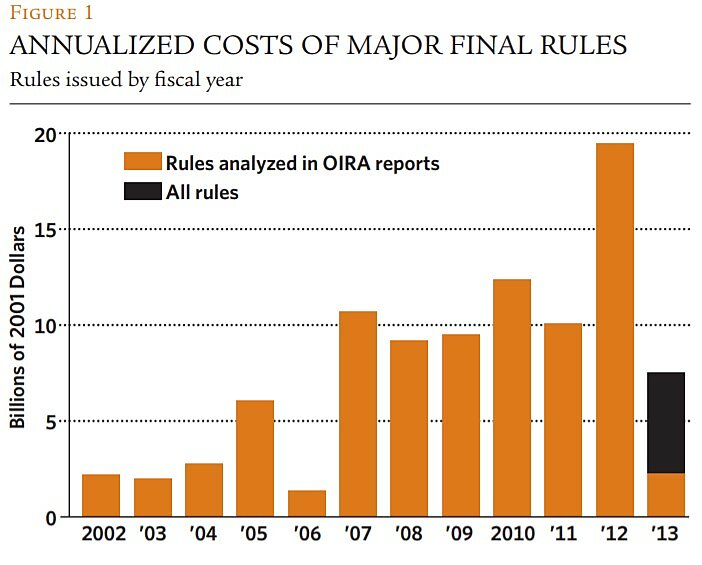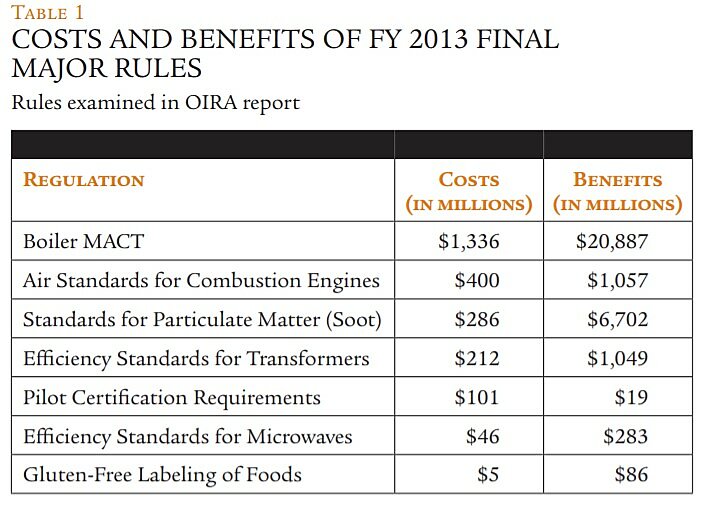It confirmed that Fiscal Year 2012 was the costliest year ever for federal regulation, which can be credited in part to finalized major rules on vehicle fuel efficiency and coal-fired power plant emissions. In contrast, FY 2013, which is the main subject of the 2014 report, imposed the lightest burden of any year during the Obama administration and was one of the least active years of the past decade. The 2014 report estimates roughly $2.3 billion (in 2001 dollars) in annualized costs from regulation in 2013. But it derives that estimate by examining just seven rules that were finalized that year. If the report had examined all of that year’s rules, the cost figure would be around $7.2 billion, or roughly three times the “official” figure.
Politics and regulation / Figure 1 shows the estimated cost of federal regulation for each fiscal year from 2002 to 2013, including the remarkable drop from 2012 to 2013. Why did that drop occur? Politics may have been at play. According to media reports, political influences likely delayed several notable regulations in 2013, including a rule to reduce the sulfur content in gasoline (part of the “Tier 3” vehicle emissions standards). The first quarter of FY 2013 occurred during the election season in 2012, so there may have been an impetus to delay a few controversial rules. For example, had the administration finalized the Tier 3 standards during FY 2013, it alone would have imposed $1.5 billion in annual burdens, raising that year’s total to $3.4 billion (in 2001 dollars).
Yet another caveat on the low cost for FY 2013: all of the White House figures are in 2001 dollars. For example, the $19.5 billion in annualized costs for 2012 is actually $25.7 billion in today’s dollars. If we were to include the cost of all rules—and the economy would surely bear those burdens—the total federal imposition was $38.6 billion (in 2013 dollars). Thus, in addition to the $27 billion in new taxes for 2013, regulatory burdens added $38.6 billion in costs, for a total of $65 billion in government burdens on the economy. However, as with most talk of regulation in public rhetoric, the “fiscal cliff” tax deal that was hammered out in late 2012 consumed all of the political oxygen, leaving historic regulatory costs largely unreported.



